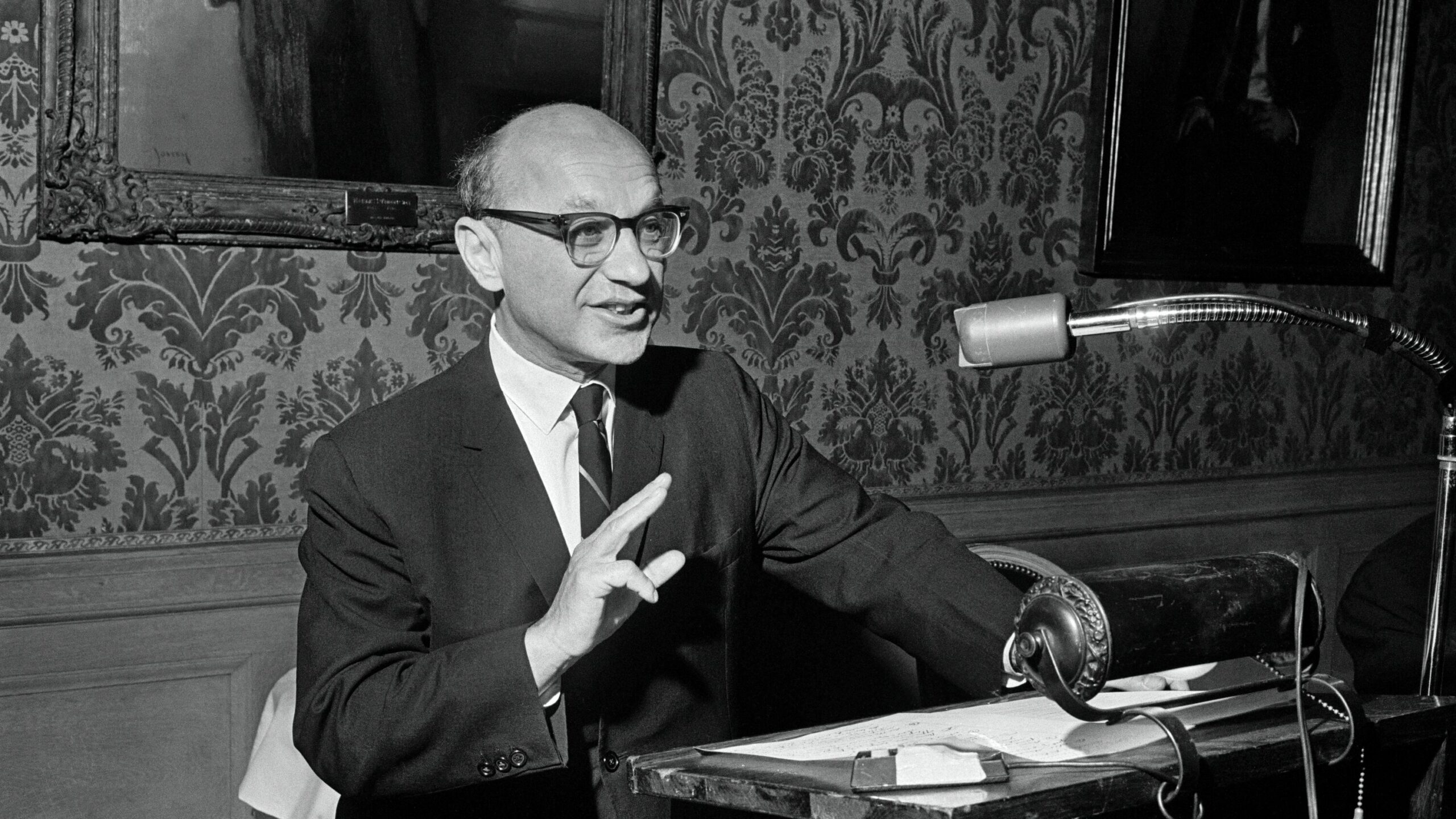For centuries, the development of economic theories has been framed around the fundamental concept of equilibrium, i.e. a point in which the forces of the system equilibrate in such a way as to make it stable. In 1936, Keynes revolutionized the field of economics by introducing the notion of involuntary unemployment and the idea that the economy might lie in a suboptimal state. Decades later, the Phillips curve was introduced in the Keynesian apparatus to fill the gap in price formation; this economic tool, according to Samuelson and Solow, offered the government a menu for policymaking. In his 1968 paper, Friedman criticized the extent to which the Phillips curve could be applied, claiming that, once expectations are considered, the employment-inflation trade-off is only temporary. In making his argument, he introduced the notion of natural rate of unemployment, which is defined as “the level that would be ground out by the Walrasian system of general equilibrium equations, provided there is imbedded in them the actual structural characteristics of the labor and commodity markets” [1].
The use of this terminology is an explicit reference to Wicksell and it is adopted to separate the real forces that drive the economy from monetary forces. Analogously to Wicksell, the market unemployment rate is the counterpart of the unob-servable natural rate and the two of them can be different. In Friedman’s argument, the apparent trade-off between employment and inflation exists only in the short run and it is due to temporary workers’ money non-neutrality. The only way for the government to keep the unemployment rate below its natural level is to continuously surprise the workers with an accelerating inflation rate. A key assumption underpinning this reasoning is that the market initial position is in equilibrium (i.e. no involuntary unemployment) and that the equilibrium is determined in the classic Marshallian way; in Lucas’ words: “Friedman’s argument […] was based on a general characteristic of economic equilibrium: the zero-degree homogeneity of demand and supply functions” [2].
A decade after Friedman, Lucas tried to dispense with the concept of involuntary unemployment by claiming that it lacked both theoretical explanation and operational applicability. To him, “it does not appear possible, even in principle, to classify individual unemployed people as either voluntarily or involuntarily unemployed” [3], as there is a voluntary and an involuntary component in every unemployment. Consequently, the definition of full employment as a state of the economy in which there is no involuntary unemployment is not usable. Even by slightly modifying its definition, it is impossible to give some operational significance to it; in Lucas view, this is not due to measure-ment problems, but “because the “thing” to be measured does not exist” [4].
Lucas’ rejection of involuntary unemployment is deeply linked with his fundamentally different methodological approach to equilibrium. Traditionally, when economists study an equilibrium, they consider it as a point in which a system is at rest in the Newtonian sense; the so-defined static equilibrium amounts “to a prediction as to how an economy would behave should external shocks remain fixed over a long period” [5]. Underlying this reasoning there is the natural rate hypothesis, according to which it is possible to “understand the main determinants of the average levels and rates of growth in economic activity without understanding the fluctuations” [6]. Lucas was skeptical of this definition, as it is impossible to “look at a market and verify directly whether it is in equilibrium or not” [7]. Indeed, he is one of the main exponents of the business cycle theory, which tries to reconcile cyclical phenomena and equilibrium theory. In equilibrium models of business cycles, “prices and quantities are taken to be always in equilibrium. In these models, the concepts of excess demands and supply play no observational role and are identified with no observed magnitude” [8]. Instead of having a single static equilibrium, the economy is assumed to be in equilibrium at each period as the result of a continuous utility maximization procedure of the single agents. Therefore, the notion of a natural rate in the economy becomes redundant as it coincides with the observed market rate.
This shift in framework was guided by the necessity of a different treatment of expectations, as Friedman’s attack to Phillips curve showed, and by the more fundamental flaw of aggregate macroeconomics, which appears to be susceptible to the Lucas’ critique. By contrast, “an equilibrium model is, by definition, constructed so as to predict how agents with stable tastes and technology will choose to respond to a new situation” [9].
References
De Vroey, M. (2016), A History of Macroeconomics, from Keynes to Lucas and beyond, Cam-bridge University Press, Cambridge, UK.
Friedman, M. (1968), “The Role of Monetary Policy”, American Economic Review, Vol. 58, pp. 1-17.
Keynes, J. M. (1936), The General Theory of Employment, Interest, and Money, Palgrave Mac-millan, London.
Lucas, R. E. Jr. (1977), “Understanding Business Cycles”, in Studies in Business Cycle Theory, pg. 215-239, the MIT Press.
Lucas, R. E. Jr. (1978), “Unemployment Policy”, American Economic Review, Vol. 68, pp. 353-357.
Lucas, R. E. Jr. (1980), “Methods and Problems in Business Cycle Theory”, Journal of Money, Credit and Banking, Vol. 12, pp. 696-715.
Wicksell, K. (1898), Interest and Prices, Macmillan, London 1936.
Quotations
[1] Friedman, M. (1968), Section I.
[2] Lucas R. E. Jr. (1977), Section III.
[3] Lucas R. E. Jr. (1978), Section I.
[4] Lucas R. E. Jr. (1978), Section I.
[5] Lucas R. E. Jr. (1980), Section III.
[6] Lucas R. E. Jr. (1980), Section II.
[7] Lucas R. E. Jr. (1977), Section III.
[8] Lucas R. E. Jr. (1980), Section VI.
[9] Lucas R. E. Jr. (1977), Section III.
